I don’t hesitate to recommend The Cutting Room Floor for many purposes, from in-depth research to the casual killing of an hour or two. The site details all manner of things deleted or changed in video games, with particular emphasis on localization choices or unused material still lurking in the code. That cut content might be entire stages, snippets of extraneous text, background graphics replaced in the final, or perhaps enemies that were excised for one reason or another.
It's those fully designed yet never-seen foes that often intrigue me the most. It seems a little unfair, after all: a complete and perfectly good opponent, ready to take its place alongside legions of other enemy ships or entirely too cute woodland creatures, was denied even a brief appearance. Older games sometimes wanted for variety in enemies, and any new threat would be a challenge and a novelty.
With that in mind, here’s a rundown of five intriguing unused enemies from the TCRF files.
MONSTER PARTY’S CAR WOLF
Monster Party is a relentlessly weird and fascinating creation, a side-scroller that plunges a baseball-playing kid named Mark into a hellish world of bizarre monsters. The final game has no shortage of oddities, with the first stage alone featuring human-faced dogs and corpse legs kicking out of the ground, but earlier versions of the game were even more gruesome and daring. The original title screen oozed blood everywhere, and most of the bosses were direct parodies of classic horror and science fiction like Planet of the Apes and The Thing.
It was perhaps a little too much. Most of the game’s blatant homages were changed for the Western release, and Monster Party never even came out in Japan (perhaps due to the media frenzy around a serial killer). A few enemies that went unutilized for less obvious reasons.

My favorite is this wolf in a racecar. There’s nothing nightmarish or legally objectionable about him (or her) just wearing shades and speeding around with a grimly businesslike expression. It’s easy to see this thing zipping back and forth in just about any Monster Party stage, waiting to be dodged or dispatched with some whacks of Mark’s bat—or lasers fired from the form Mark takes when he fuses with his otherworldly bird-dragon ally Bert. I told you that Monster Party was weird.
Every bit of Monster Party, including its clumsy controls, nicely evokes the sort of awkward demi-nightmare a kid might have after an evening of junk food and horror flicks, and the wolfish racer falls into that dreamlike insecurity. It’s not scary or grotesque. It’s just a wolf in a racecar, and you have no idea why it’s there.
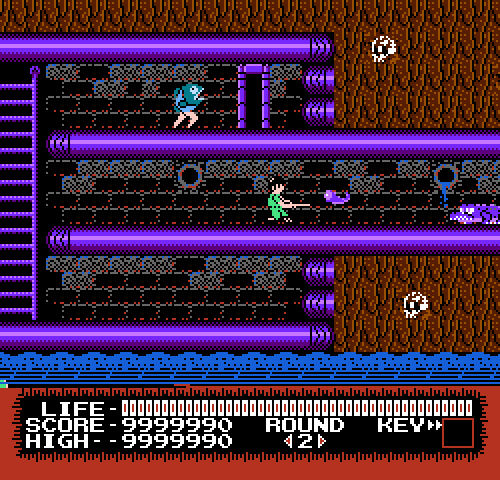
Perhaps racer wolf here was cut for not being strange enough for Monster Party, but I like him. This wolf deserved a spot in the game and perhaps even a dreadful pun of a name in the manual, like Wolfspeed or Caniner or Wolfgang Amadeus Motorcart. Or just Car Wolf. Like Star Wolf? You know, the Edmond Hamilton novels that inspired a tokusatsu TV series that Sandy Frank released here as Fugitive Alien and Mystery Science Theater 3000 mocked?
I doubt we’ll see Monster Party revived in any capacity, but it would be a marvel if Bandai decided, against all sense of profit, to restore it with the censored bosses and other material. This would include Car Wolf, of course. I’m sticking with that name.
PHELIOS’ PILLBUGS
Phelios is a pretty good arcade shooter from Namco. It’s also a source of minor irritation. I usually like it when video games play fast and loose with mythology, but I’m always annoyed at Phelios repurposing Artemis, a proud goddess of the hunt, as a suggestively imperiled princess. Really, Namco, couldn’t you just go with Aphrodite or Persephone or maybe one of the many, many actual princesses in Greek myth who needed saving? How about Andromeda, since you’re already playing off Clash of the Titans by having the protagonist Apollo ride Pegasus and everything? The Artemis of ancient myth hung around in the woods, requiring neither men nor rescue, and she’s probably the least appropriate choice for a helpless, chained-up captive woman
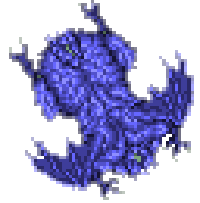
Uh, anyway. Phelios has several enemies cut from the final game. The most perplexing is this oddity, which resembles some sort of grape-flavored rotisserie chicken. Perhaps it’s a piece of a larger, unfinished monster, but we can always envision a level where the player faced wave upon wave of flying ill-advised food products.
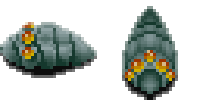
My favorite absent Phelios creature, however, is a familiar little pillbug that curls up and rolls around. Namco is, of course, not fooling anyone who’s seen Nausicaa of the Valley of the Wind. That’s an Ohmu from Hayao Miyazaki’s landmark manga and film. They’re among the most frequently imitated of Miyazaki’s creations, as you’ll see tributes to them in Crystalis, Riot, Ghouls ‘N Ghosts, and plenty of other places. And yes, turning them into any sort of enemy contravenes the whole point of Nausicaa’s story, which was that these giant toxic creatures were benevolent and misunderstood.
These discount-store Ohmu probably got the axe for some logistical reason, but one can conjecture that some designer realized the thematic impropriety of including them. As to what philosophical violations prompted the purple chicken’s removal, I cannot even guess.
MEGA MAN 4’S ROBO SEAL
I was a little unfair to Mega Man 4 when I was a kid. For me it was the moment that the series started to feel formulaic and perhaps even bland. The master robots weren’t as striking as prior lineups, the stages were less memorable, and even the music wasn’t as crisp. Today, though, I can at least appreciate Mega Man 4 for its nice environmental effects and impressively large mid-level bosses.
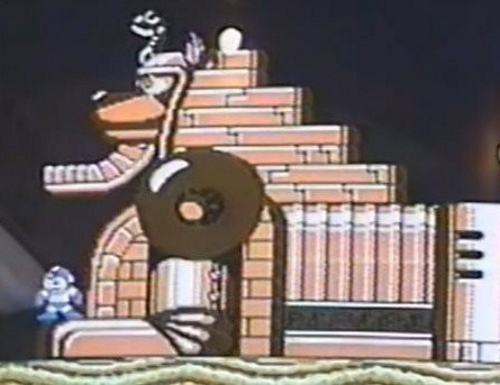
At least one of those bosses didn’t make the cut. A massive Sphinx originally appeared in the thick of Pharaoh Man’s desert lair, but the final game removed it. Early footage of Mega Man 4 suggests that the Sphinx took up too much of the screen and made things too tough on the player, but it’s absence definitely leaves Pharaoh Man’s stage lacking. And while there's a similar foe in Mega Man V for the Game Boy, it's much smaller.
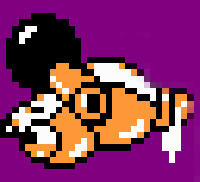
My favorite deleted enemy from Mega Man 4 isn’t the Sphinx, though. It’s a robot seal presumably intended for Dive Man’s level. The seal’s entire sprite is still in the game’s files, making it easy to see how the critter would have floated on its back and lobbed a spherical bomb at Mega Man.
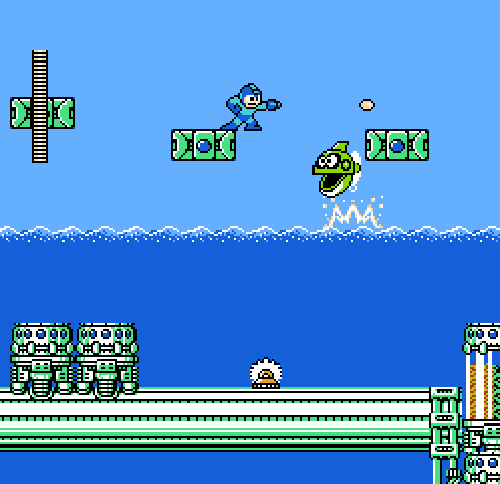
Robo-Seal was possibly cut because there wasn’t room in Dive Man’s level, which admittedly gets a little crowded. Or was Capcom concerned about the player shooting a seal? Probably not, since Mega Man zaps all sorts of cybernetic animals, but then Nintendo changed the Topi enemies in Ice Climber into yeti for international audiences who might object to anything that smacked of seal hunting.
Whatever the reason, I count it as a loss that this cute little pinniped was removed. Many enemies in Mega Man 4 are faceless machines, so a googly-eyed Robo-Seal would have added further cartoonish charm—and maybe improved my younger self’s opinion of the game.
STRIDER’S FIRE NINJAIt’s not surprising that Strider has unseen material lurking in its code. The game is a messy experience, though unlike some other awkward Capcom releases (such as those miserable Micronics ports) Strider has the excuse of ambition. It attempts a vibrant action manga in NES form, offering stages that scroll in all directions, large sprites that swamp the screen, and locales all across the globe. That helps make it one of my favorite NES games, truth be told. It’s choppy and jarring but also stylish, far-reaching, complex, and in the end pleasantly depressing.
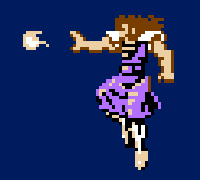
Strider’s most intriguing unused character is a ninja-like boss who wields fireballs, surrounding himself with them and tossing flames at our protagonist, Hiryu. He’s roughly present in a prototype version of the game, appearing as one of many bosses at the Red Dragon Headquarters. The final game sticks a cyborg samurai there instead.
Admittedly, a boss that wields flames is pretty low on Strider’s selection of oddities, which include a robot shark, a whirling tornado of a swordsman, and giant demon-mutant trees. And they have names like Flash Blade, Kodiak, and Badger. The fire ninja doesn’t even have that. He’s just a fire ninja.
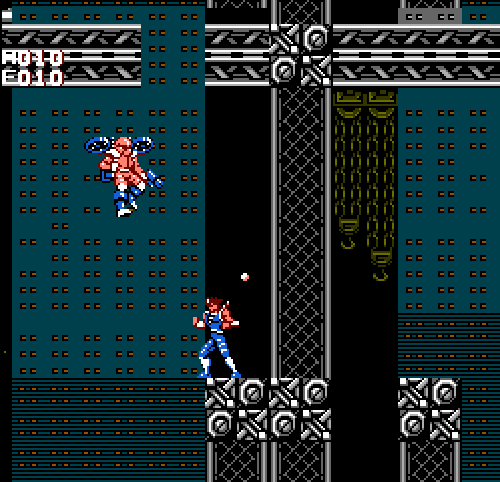
I don’t think the TCRF has a full page for the NES version of Strider, but there’s a nice rundown of all the differences between the prototype and the final game. It’s doubly interesting since Strider was developed in Japan and had its own manga series there, but Capcom released it only in North America. It wasn’t uncommon for games to be refined and expanded in other territories after their American releases (ask me about Trouble Shooter, because I am honor-bound to discuss it at least once a year), so perhaps the fire ninja would have found his way back into the game if Capcom had polished it up for Japan, Europe, or another territory.
SPLATTERHOUSE’S NUN
The unused enemies of Splatterhouse are a touch disappointing. It’s a savagely gruesome arcade game, after all, so you might expect the never-used foes to be graphic horrors too hideous or objectionable for public display.
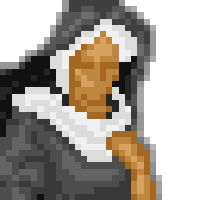
There are indeed some decapitated zombies and seeping ghouls in Splatterhouse’s unseen files, but none of them seems particularly more offensive than the monsters that Rick routinely faces in the actual game. In fact, the most interesting one for me is this simple image of a nun.
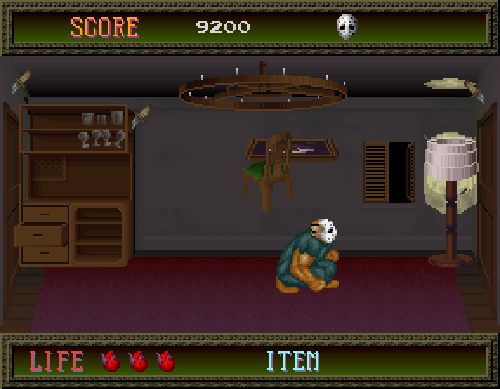
This was apparently intended as part of the second stage’s boss battle, in which a poltergeist hurls furniture and other assorted household objects at Rick. One of those items could’ve been a portrait of a nun. Or perhaps a complete VHS collection of The Flying Nun. Presumably there was some irony at work there, but it never made the final cut of Splatterhouse.
And I wonder why. Did someone think that involving a nun’s picture in a horror game was potentially offensive—or perhaps just cliché? Like the other entries here, the mystery isn’t so much what was cut as to why these ninja bosses and Miyazaki bugs and determined Car Wolves somehow weren’t good enough to appear in their respective games. Well, they’re good enough for me.
